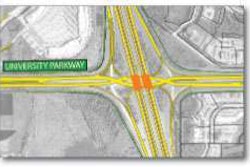The American Road & Transportation Builders Association (ARTBA) told the White House Council on Environmental Quality (CEQ) in comments submitted April 9 that the “categorical Exclusion” (CE) process should be improved by focusing on methods to reduce highway project delay.
The transportation planning process allows projects which neither individually nor cumulatively have a significant environmental impact, to be treated as a CE under the National Environmental Policy Act (NEPA).
State agencies must provide the Federal Highway Administration (FHWA) with sufficient information on a case-by-case basis to demonstrate the environmental impacts associated with a project will not rise above the CE threshold. CEs are typically used for projects where no real alternatives analysis is necessary, such as road rehabilitation or bridge replacement projects.
In its comments, ARTBA called on CEQ to expand the number of opportunities where CEs can be used, as opposed to the more time consuming environmental assessments (EA) or environmental impact statements (EIS). In its current state, NEPA is ambiguous on whether a CE or EA would be required for a specific project. This can, and often does, cause project sponsors to opt for the more time consuming EA in order to avoid potential litigation at a later time, according to ARTBA.
The association cautioned that NEPA was never meant to be a statute enabling delay, but rather a vehicle to promote balance. While the centerpiece of such a balancing is the environmental impacts of a project, ARTBA noted other factors must be considered as well, such as the economic, safety, and mobility needs of the affected area and how a transportation project or any identified alternative will affect those needs. Modifying the CE process to allow for greater use of CEs, ARTBA reasoned, will help to achieve this necessary balance.
A copy of ARTBA’s comments is available under the “regulatory affairs” section of https://www.artba.org/










